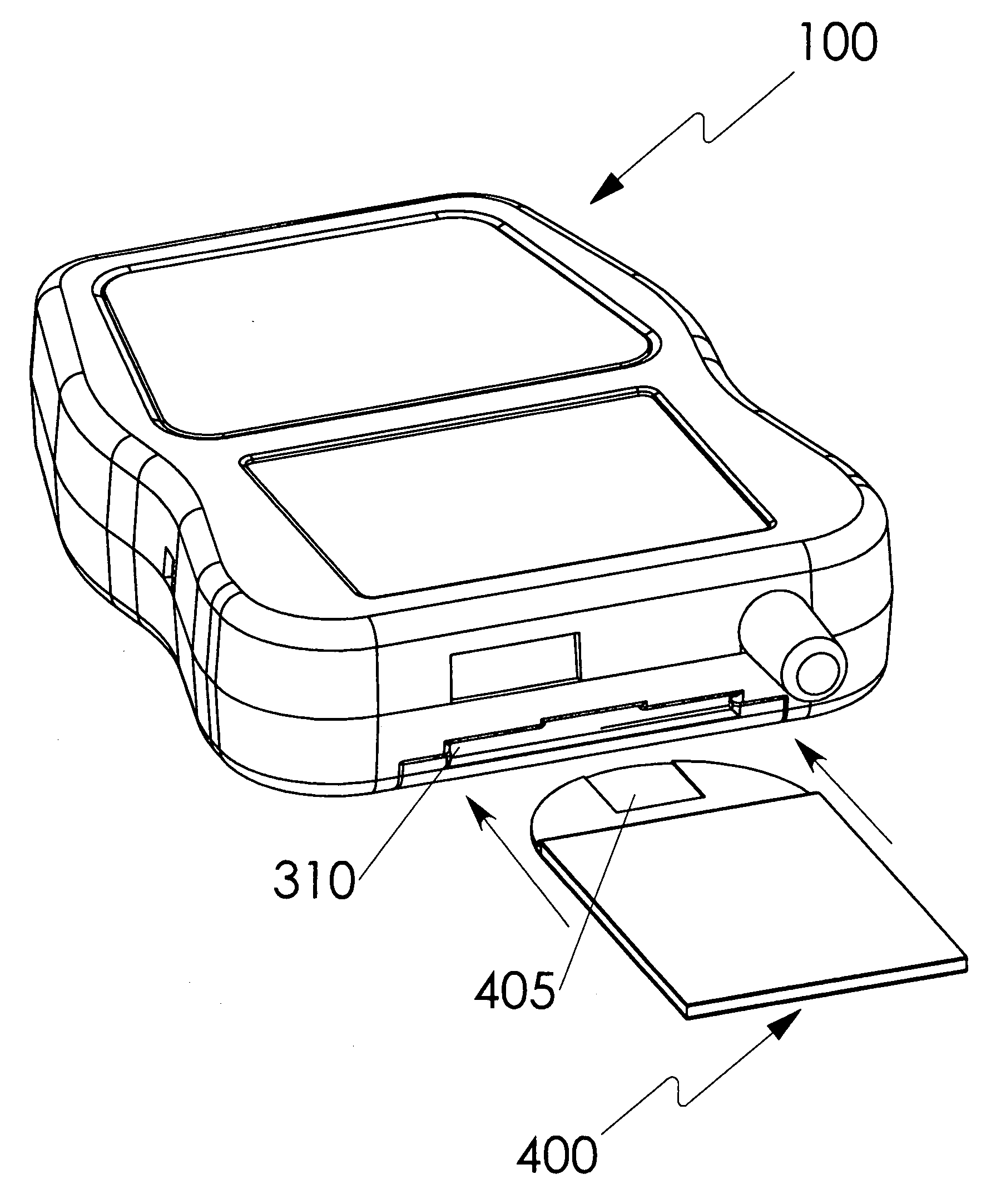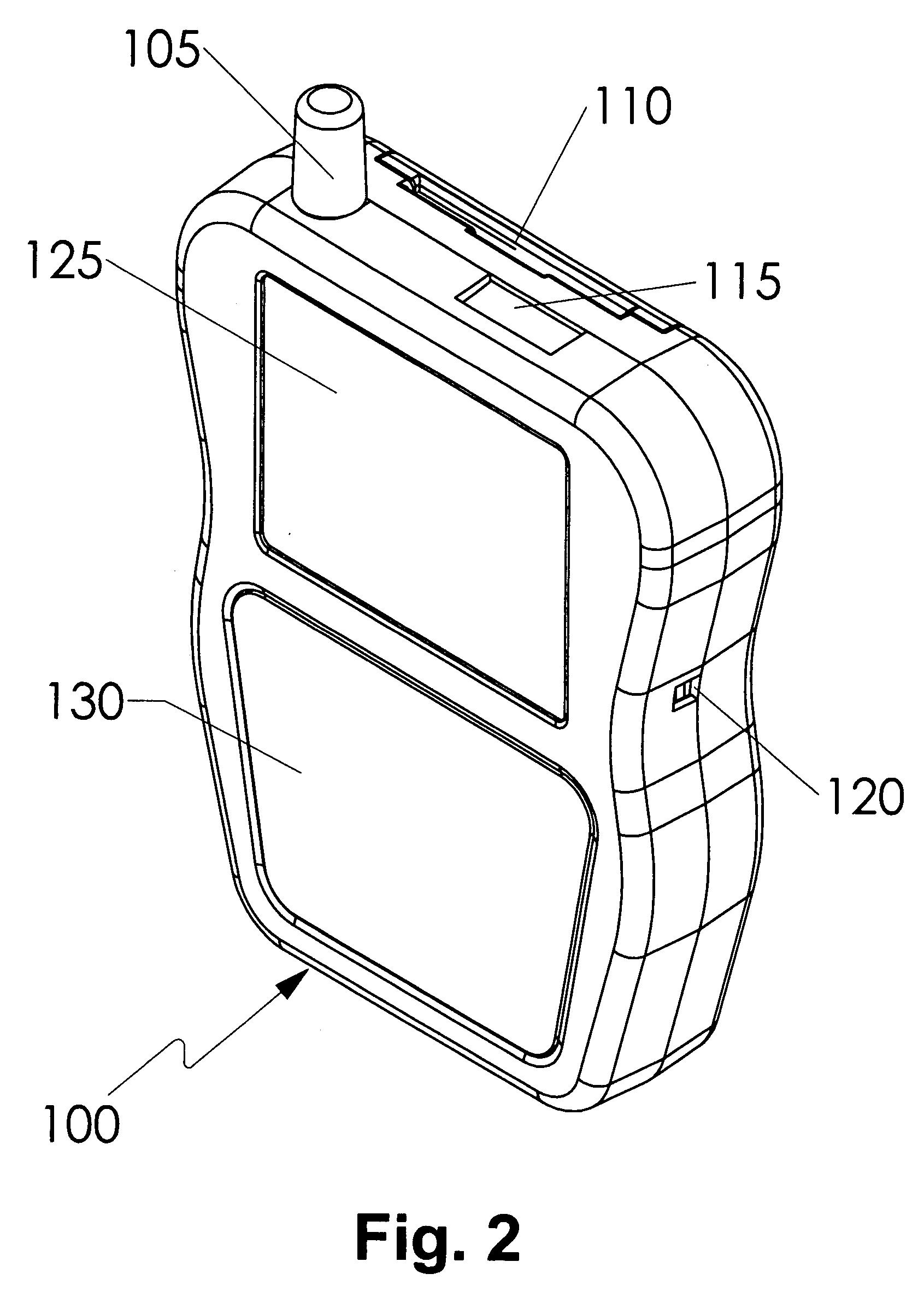Method for detection of chemicals on a surface
a surface and chemical technology, applied in chemical methods analysis, material analysis using wave/particle radiation, instruments, etc., can solve the problems of not being able to effectively detect or block the use of mobile phones as effective detonators, and not being able to carry enough armor plating to prevent the penetration of explosive formed charges
- Summary
- Abstract
- Description
- Claims
- Application Information
AI Technical Summary
Benefits of technology
Problems solved by technology
Method used
Image
Examples
Embodiment Construction
[0040]The present invention alleviates the above noted problems by providing a simple, hand held, battery powered, sensitive and specific unit requiring no external calibration, ability to work in a wide range of environments, with a broad dynamic range and “plug-and-play” type operation. The flexible capsules contained in the card safely enclose and protect the reagents. Once swiped on a surface and placed in the machine, the device controls the sequence of fluid addition and heating. The optical assembly provides controlled illumination at specific wavelengths, any of which can be turned on separately by the controlling software.
[0041]The detector incorporates software configurable color filters and detects specific wavelengths in and beyond the human-visible spectrum, permitting an objective and sensitive measurement of color. If desired, the device can work fluoroscopically using different illuminating and detecting wavelengths.
[0042]With reference to FIG. 1 is an overview flowc...
PUM
 Login to View More
Login to View More Abstract
Description
Claims
Application Information
 Login to View More
Login to View More - R&D
- Intellectual Property
- Life Sciences
- Materials
- Tech Scout
- Unparalleled Data Quality
- Higher Quality Content
- 60% Fewer Hallucinations
Browse by: Latest US Patents, China's latest patents, Technical Efficacy Thesaurus, Application Domain, Technology Topic, Popular Technical Reports.
© 2025 PatSnap. All rights reserved.Legal|Privacy policy|Modern Slavery Act Transparency Statement|Sitemap|About US| Contact US: help@patsnap.com



